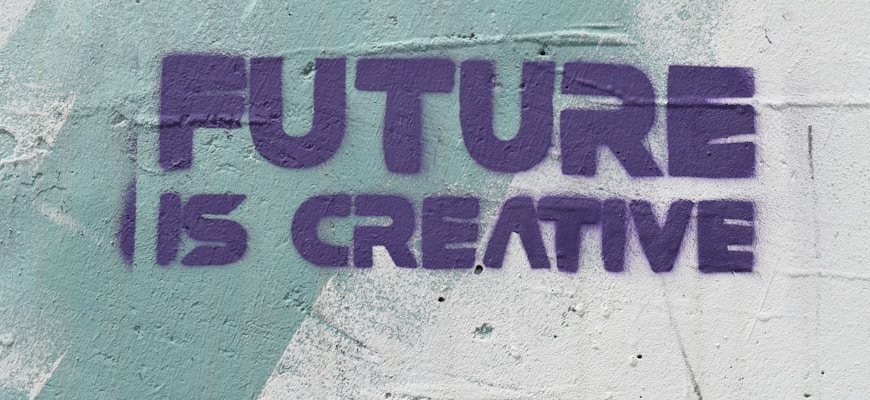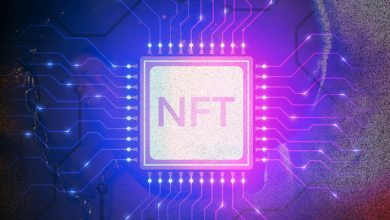Crypto Art and NFTs: Redefining the Future of Creativity

- Understanding the rise of Crypto Art and NFTs
- Exploring the intersection of art and technology in the digital age
- The impact of blockchain technology on the art world
- Unlocking new opportunities for artists through NFTs
- Challenges and controversies surrounding Crypto Art and NFTs
- The future of creativity: How Crypto Art is reshaping the art market
Understanding the rise of Crypto Art and NFTs
The rise of Crypto Art and NFTs has been a phenomenon that has captured the attention of the art world and beyond. These digital assets have opened up new possibilities for artists to showcase their work and reach a global audience like never before. NFTs, or non-fungible tokens, have revolutionized the way art is bought and sold, providing a secure and transparent way to verify ownership and authenticity.
One of the key drivers behind the popularity of Crypto Art and NFTs is the blockchain technology that underpins them. Blockchain allows for the creation of unique digital assets that cannot be replicated or forged, giving artists a new level of control over their work. This has led to a surge in interest from both established artists and newcomers looking to explore this exciting new frontier.
Another factor contributing to the rise of Crypto Art and NFTs is the growing interest in digital ownership and collectibles. As more aspects of our lives move online, there is a greater desire to own unique digital items that hold sentimental or monetary value. NFTs provide a way to tokenize these items, creating a new market for digital art and collectibles that is only just beginning to be explored.
Overall, the rise of Crypto Art and NFTs represents a shift in how we perceive and interact with art in the digital age. By leveraging blockchain technology and the growing interest in digital ownership, artists are able to redefine the future of creativity and reach new audiences in ways that were previously unimaginable. As this trend continues to grow, it will be fascinating to see how artists and collectors alike embrace this new era of art and innovation.
Exploring the intersection of art and technology in the digital age
In the digital age, the intersection of art and technology has opened up new possibilities for creative expression. Crypto art and NFTs are at the forefront of this revolution, redefining the future of creativity. By leveraging blockchain technology, artists can now create unique digital assets that are verifiable, scarce, and secure.
These digital artworks, known as NFTs, are revolutionizing the art world by allowing artists to tokenize their creations and sell them directly to collectors. This has the potential to democratize the art market, giving artists more control over their work and enabling new revenue streams.
The rise of crypto art and NFTs has sparked a vibrant community of digital artists, collectors, and enthusiasts who are exploring the boundaries of what is possible in the digital realm. This new ecosystem is pushing the boundaries of traditional art forms, blurring the lines between the physical and virtual worlds.
As technology continues to evolve, the potential for crypto art and NFTs to reshape the future of creativity is limitless. Artists are experimenting with new mediums, exploring virtual reality, augmented reality, and artificial intelligence to create immersive and interactive experiences for their audiences.
In this digital landscape, the possibilities for artistic expression are endless. By embracing the intersection of art and technology, creators are forging new pathways for self-expression, collaboration, and innovation. The future of creativity is here, and it is being shaped by the dynamic fusion of art and technology in the digital age.
The impact of blockchain technology on the art world
The integration of blockchain technology in the art world has revolutionized the way artists create, sell, and collect art. By utilizing blockchain, artists can create digital artworks known as Crypto Art, which are verified by unique tokens called Non-Fungible Tokens (NFTs). This innovation has opened up a new realm of possibilities for artists to showcase their work and connect with a global audience like never before.
One of the key impacts of blockchain on the art world is the increased transparency it provides. With blockchain technology, every transaction involving a piece of Crypto Art is recorded on a public ledger, ensuring that the provenance of the artwork is easily traceable. This transparency not only helps to combat issues such as art forgery and theft but also gives collectors confidence in the authenticity and value of the art they are purchasing.
Moreover, blockchain technology has enabled artists to receive fair compensation for their work through smart contracts. These self-executing contracts automatically transfer funds to artists whenever their artworks are sold, eliminating the need for intermediaries and ensuring that artists receive their rightful share of the profits. This has empowered artists to take control of their careers and finances in a way that was previously impossible.
Additionally, blockchain technology has facilitated the creation of decentralized art marketplaces where artists can showcase and sell their work directly to collectors without the need for traditional art galleries or auction houses. This direct peer-to-peer interaction not only allows artists to retain more control over their sales but also enables them to reach a global audience of art enthusiasts who are eager to support emerging talent.
Overall, the impact of blockchain technology on the art world has been transformative, bringing unprecedented levels of transparency, fairness, and accessibility to the creative industry. As Crypto Art and NFTs continue to gain traction, artists and collectors alike are embracing this new era of creativity, redefining the future of art in the digital age.
Unlocking new opportunities for artists through NFTs
The rise of NFTs has unlocked a world of new opportunities for artists looking to monetize their work in the digital realm. Non-fungible tokens provide a unique way for creators to sell their art directly to collectors, without the need for intermediaries. This direct connection between artist and buyer not only empowers artists to retain more control over their work but also opens up a whole new market for art enthusiasts to discover and invest in unique pieces.
By tokenizing their art as NFTs, artists can create scarcity and exclusivity around their work, driving up demand and potentially increasing the value of their pieces over time. This newfound ability to tap into a global network of collectors and buyers can be a game-changer for artists who were previously limited by traditional art market constraints. With NFTs, artists can reach a wider audience, gain recognition, and establish themselves as pioneers in the world of crypto art.
Furthermore, the blockchain technology that underpins NFTs ensures transparency and provenance, giving collectors peace of mind knowing that the art they are purchasing is authentic and original. This level of trust and security is crucial in the art world, where forgeries and copyright infringement are common concerns. By leveraging NFTs, artists can protect their intellectual property rights and establish a secure digital footprint for their creations.
In conclusion, NFTs have revolutionized the way artists interact with the digital art market, offering them unprecedented opportunities for exposure, recognition, and financial gain. By embracing this new technology, artists can take their creativity to new heights and redefine the future of art in the digital age.
Challenges and controversies surrounding Crypto Art and NFTs
One of the main challenges surrounding Crypto Art and NFTs is the issue of environmental impact. The process of creating and trading NFTs involves high energy consumption, primarily due to the proof-of-work mechanism used in blockchain technology. This has raised concerns about the carbon footprint of NFTs and their contribution to climate change.
Another controversy that has emerged is the question of ownership and copyright. While NFTs offer a new way for artists to monetize their work and establish ownership through blockchain technology, there have been instances of copyright infringement and plagiarism in the world of Crypto Art. This has led to legal disputes and debates over intellectual property rights in the digital realm.
Moreover, the speculative nature of the NFT market has sparked discussions about its sustainability. The fluctuations in prices and the hype surrounding certain NFTs have raised questions about the long-term viability of this digital asset class. Critics argue that the NFT bubble could burst, leaving investors and artists at risk of financial losses.
Overall, while Crypto Art and NFTs hold great potential for revolutionizing the art world and empowering creators, they also present a range of challenges and controversies that need to be addressed. Finding solutions to issues such as environmental sustainability, copyright protection, and market volatility will be crucial in shaping the future of creativity in the digital age.
The future of creativity: How Crypto Art is reshaping the art market
The future of creativity is being reshaped by the emergence of crypto art and non-fungible tokens (NFTs). These digital assets have revolutionized the art market by providing artists with new opportunities to showcase and sell their work in a decentralized manner.
One of the key advantages of crypto art is that it allows artists to tokenize their creations, making them unique and verifiable on the blockchain. This not only gives artists more control over their work but also ensures that buyers are getting authentic pieces of art.
As a result, the art market is experiencing a shift towards a more inclusive and accessible ecosystem, where artists from all backgrounds can participate and thrive. This democratization of art ownership is opening up new possibilities for both creators and collectors alike.
Furthermore, the use of blockchain technology in the art market is bringing transparency and security to transactions, reducing the risk of fraud and ensuring that artists are fairly compensated for their work. This level of trust and accountability is reshaping the way art is bought and sold, creating a more sustainable and equitable market for all stakeholders.



